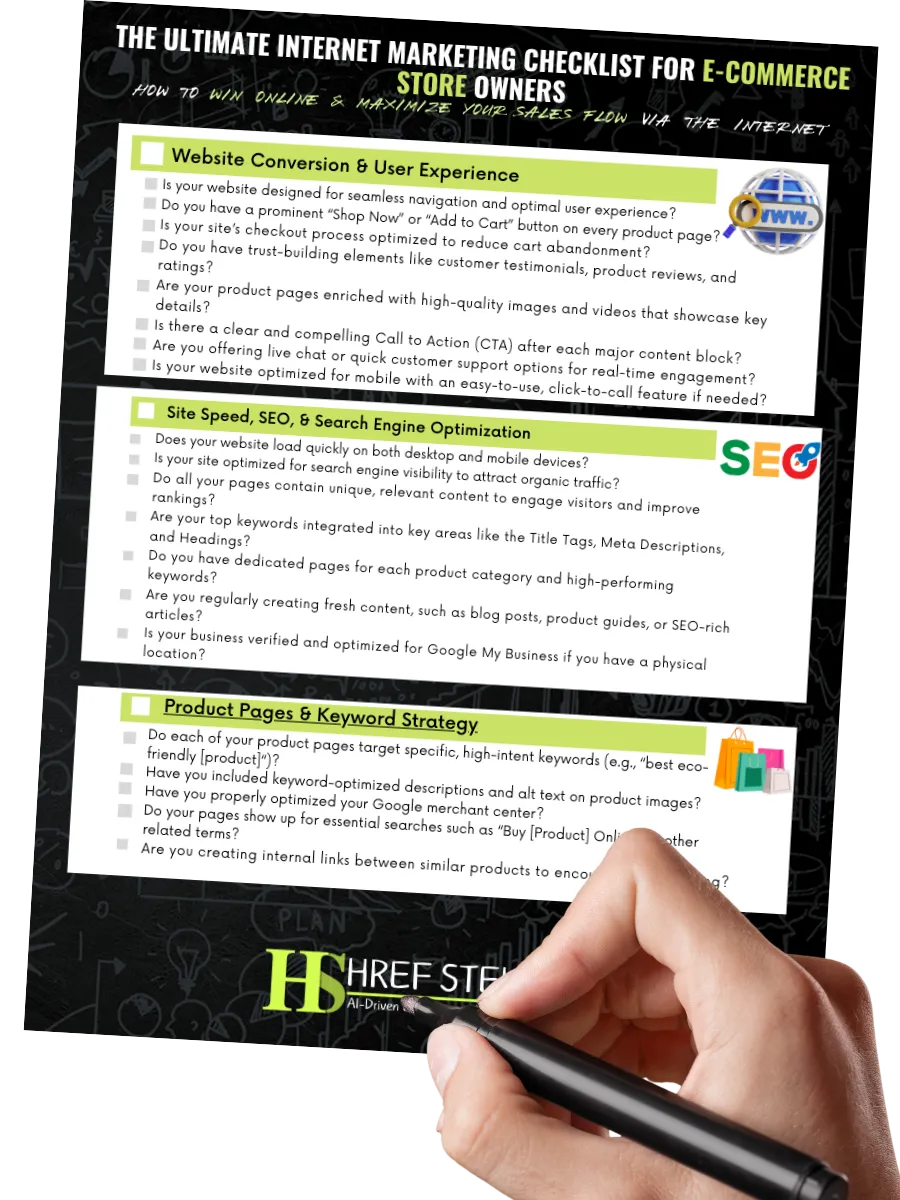Search Engine Optimization (SEO) helps you to back off and consider the whole picture. How would you apply general strategies and best practices to raise the SEO performance of your online store?
Adoption of artificial intelligence technologies for SEO alters how consumers view search results even while it can help automate and speed up operations including keyword research, content creation, or website schema.
One outstanding example is Google Search Generative Experience, which employs artificial intelligence to provide users with more complete search results. While bearing in mind the changing relevance of AI tools and new technologies like Google Search Generative Experience, this blog will teach you about the broad methods and ecommerce SEO best practices you may employ to increase SEO performance and optimize ecommerce website.
SEO tactics to Optimize Ecommerce Website
1. Conduct Keyword Searches Considering Buyer Intention.
When doing keyword research, avoid concentrating just on the most often used keywords in your field of work. You must include buyer intent into the mix.
Buyer intent resembles the goal behind a search query. Look at the particular words and phrases people enter into search engines when they search online to help identify it.
Two primary categories of keyword intent exist:
- Informational keyword intent: These searches feature factual enquiries or questions like “how do I?” In these situations, the searcher seeks further specifics regarding a topic.
- Commercial keyword intent: These searches happen when a searcher understands what they want but does not know where to get it. They might type searches for “buy smartwatches” or “find Hong Kong flight deals.” Usually, users of commercial keywords intend more to buy.
You can find keyword intent in several methods. One keyword tool you might use is Google’s keyword planner. You might also employ a tool like Ubersuggest. Content creators, bloggers, copywriters, and others wishing to explore user search questions or create fresh content ideas will find this tool helpful. You might also consider using Answer the Public. All you need to find exactly what people are searching for with this tool is to enter your keyword on the front page.
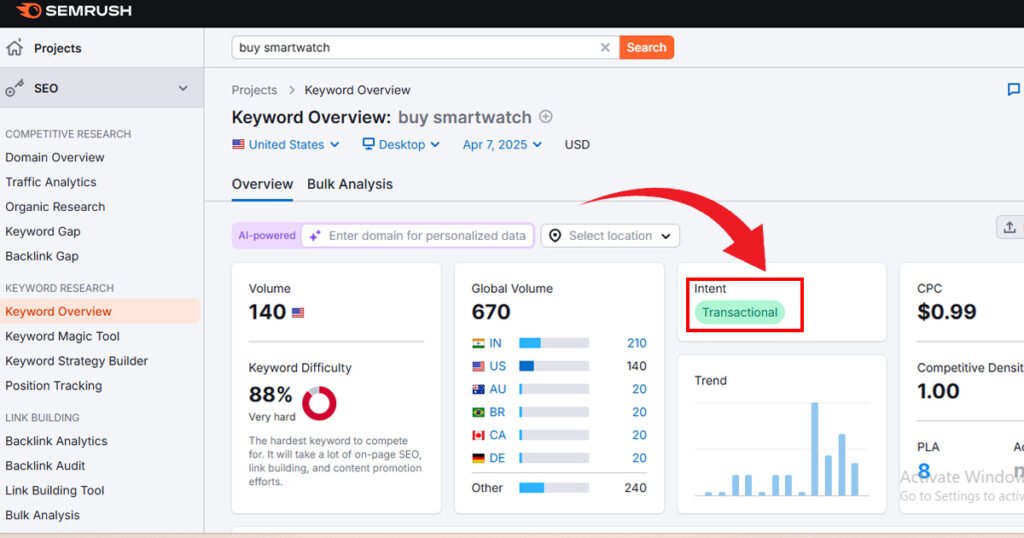
2. Never Forget Long-tailed Keywords.
Long-tail keywords often show on the right side of the page on SERPs. Though usually with low search traffic, a long-tail keyword is nonetheless significant for your company. Usually, it turns out nicely since it more closely matches the search criteria. It also usually causes more traffic congestion.
Long-tail keywords can expose the objectives and search for your client. For instance, “sunscreen” is a short-tail keyword while “best sunscreen with SPF50 for summer” is a long-tail term and offers additional details regarding the most likely next actions and intentions of the buyer.
Given their great traffic source, try to rank for long-tail keywords. They notably help for:
- Competitive Niches
- Enhanced Conversion Rates
- Ranking Newly Created Sites more Quickly
- Quick Gains from a Small Budget
Google’s “People also ask” function or a free keyword tool like Ubersuggest or Wordtracker will help you uncover long-tail keywords.
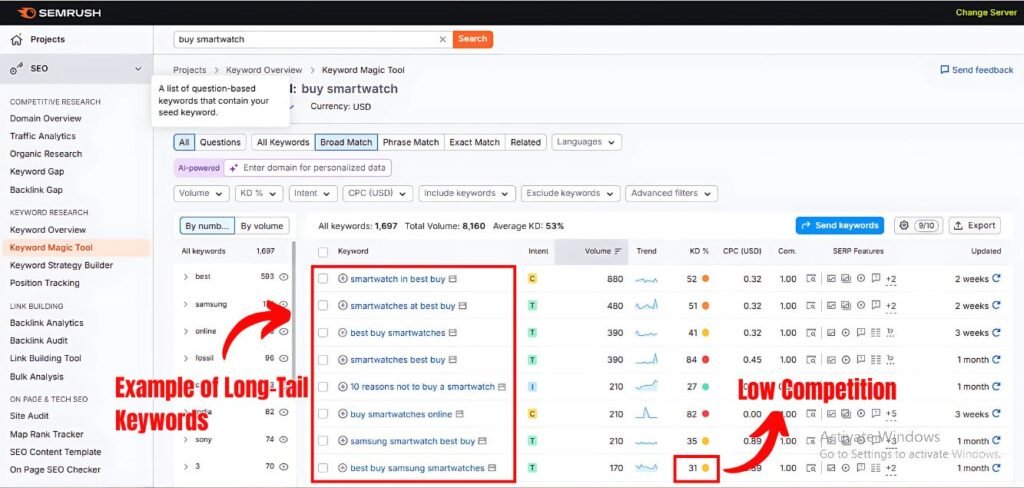
3. Streamline Product Pages to Raise Ranking.
Using on-page optimization strategies will help you draw in and get fresh clients as well as increase conversion. Concentrating your efforts on the most important aspects of your e-commerce website makes sense. These belong to you:
- Product Descriptions
- Images
- Reviews
Product Descriptions
You could think about optimizing product descriptions by:
- Including Top-notch Original Photos
- Using Keywords
- Including Descriptions Rich in Keywords
- Add CTAs
- Including Testimonials
Images
Though they can be distracting, images and photos can help to make a page more appealing and fascinating. Thus, keep from employing too many of them in descriptions.
Higher search engine results and more traffic from possible clients should follow from bettering your photos for SEO. Social networking could potentially provide traffic for you.
In order to optimize your images:
- Choose Suitable Images in the Proper Scale.
- Add ALT Tags and Captions.
- Name Files using the Appropriate Keywords.
Review Notes
Your success while using ecommerce best practices depends critically on reviews. They assist customers in choosing whether to conduct business with an online store or purchase a given good. Reviews can raise conversion rates and help you establish consumer confidence.
Send automatic messages encouraging consumers to post reviews anytime they buy anything from your website.
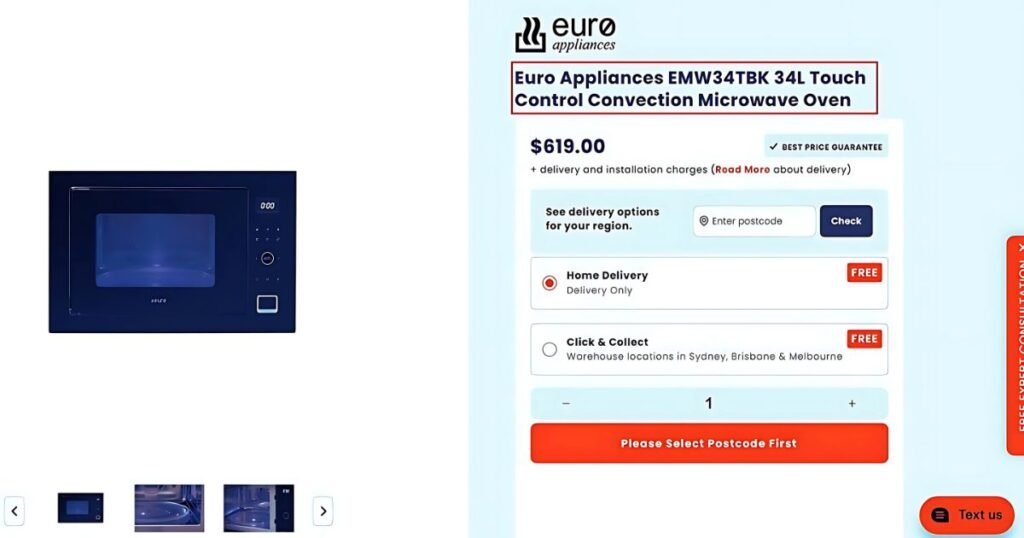
4. Ensure that Your Website is User-friendly.
In e-commerce, you really need to focus on your site’s user experience, or UX. Good design improves the usability of your site and increases its visual appeal.
Apart from appearance, your site should function as expected. Make sure adverts don’t compromise the content’s view by the user. Make sure your site is easily navigable and that using it is intuitive.
Customers should always be engaged on your website, find what they are seeking for fast and effortlessly, and generally have a great experience. Google could rank your website lower if it believes it presents a bad experience for users.
To raise UX, make sure your website:
- Loads Immediately
- Is it Mobile-friendly?
- Is Clutter Free?
- Has Uniform Styling and Easy Navigation with CTAs
- Is Easily Accessible

5. Apply a Basic URL Structure.
A clear URL structure on your e-commerce website is the best ecommerce SEO best practice to improve site user experience. Since it gives search engines more pertinent data, it enhances your efforts at SEO e-commerce. Sharing items on social media and other websites also comes more naturally.
URLs should be as brief as feasible and easily readable and understandable.
POOR EXAMPLE: https://www.example.com/baking/article-about
GOOD EXAMPLE: https://www.example.com/baking-articles/.
Your URLs should have keywords incorporated into them. We call these “meta tags”. They inform search engines about the nature of the material on your website. Search engines choose where the page should rank in SERPs by scanning the URL and leveraging the keywords there.
You might also use a navigational tool like breadcrumbs to enable website users to go back to where they began by retracing their past actions. To increase SEO, you might add them using JavaScript or with markup elements.
Additionally, refrain from using stop words in URLs. Included among stop words are “the,” “and,” “of,” and “a.” These could cause your SEO results to drop and make your content less readable.
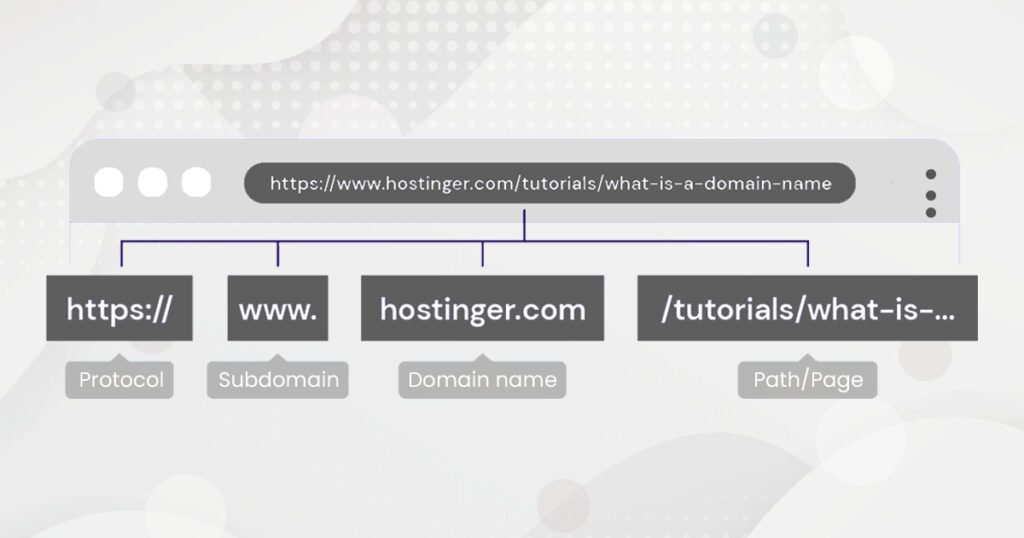
6. Prevent the Use of Duplicate Content and Pages
Many online stores get caught in the trap of including on their websites repeated product descriptions and photographs. You can lower your site’s duplicate content load with:
- Using a CMS with site-wide 301 redirects or placing canonical tags on every page you know could contain duplicates; for example, pages with similar titles or that have identical URLs.
- Specify the URL to Add
- Utilising Several Product Pictures
- Including Particular Keywords on Other Pages
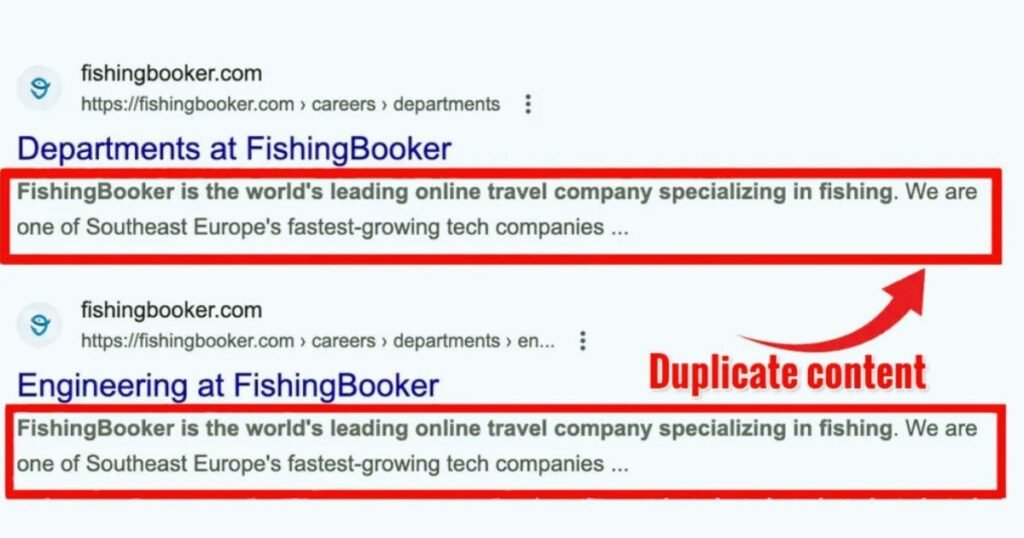
7. Link Building for E-Commerce
SEO’s ranking system heavily relies on link creation. Excellent links tell Google your site is reputable. Backlinks also support keyword-based site ranking.
To build backlinks with quality:
- Create Guest Posts
- Utilise Social Media Advertising
- Publish Material on Social Media
- Issues Press Releases
- Make Infographics and Share them Online
- Share Case Studies and Whitepapers
Steer clear of purchasing links. Certain sponsored links violate Google’s policies. Moreover, cheap links usually have poor quality. Lower ranks and fewer visitors follow from inadequate quality links. They could also sour your website’s reputation.
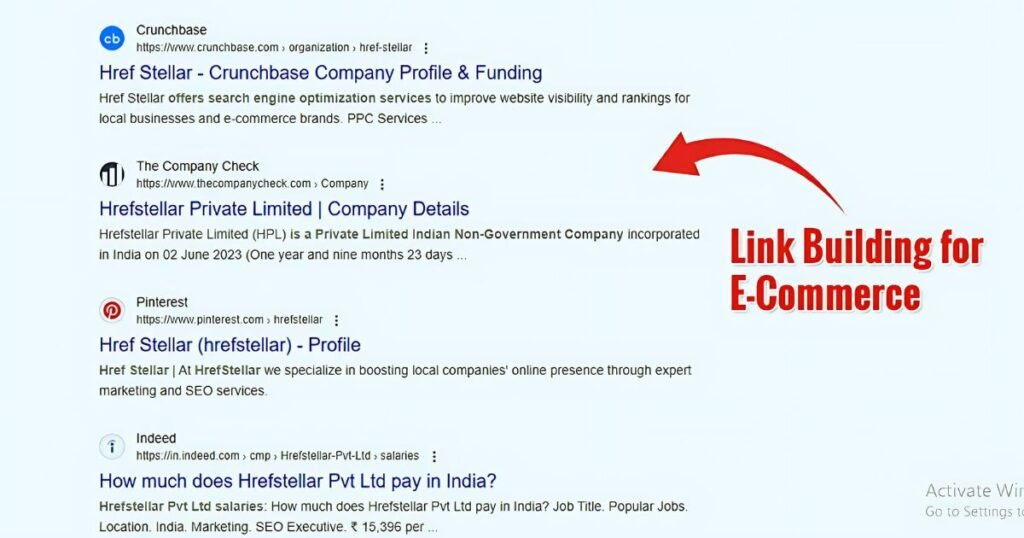
8. Including a Sitemap
A sitemap is a graphic portrayal of your website. It should go into great detail on every page on your website as well as on all the subcategories, goods, and other important notices on those pages.
You might create a site map by yourself or with an automated program. Sitemaps apply HTML and XML. To visitors, HTML sitemaps are more useful.
These instruments help you to construct a sitemap:
- Webmaster Tools from Google
- Generator for Lucid Sitemaps
- Powermapper
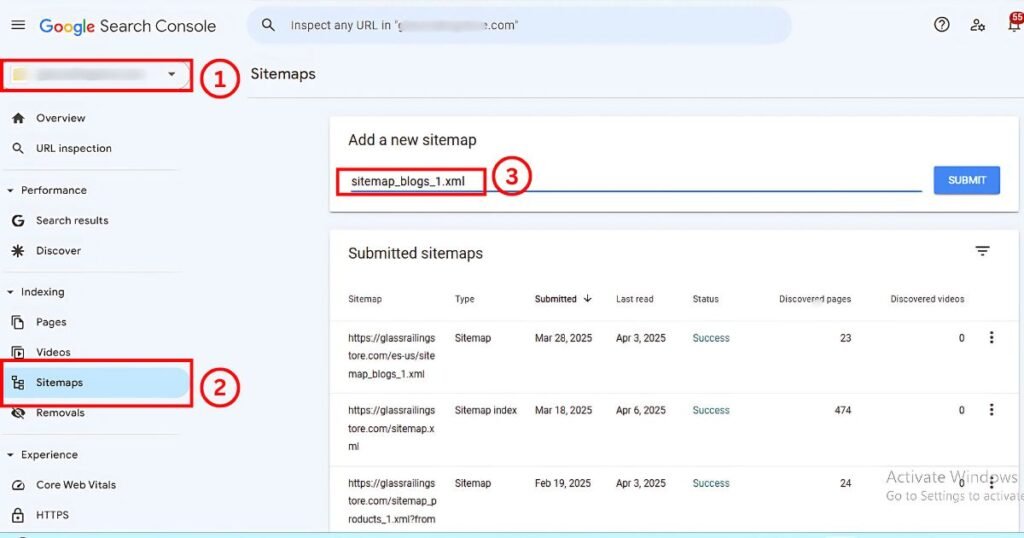
9. Simplify Social Sharing
Usually, social media sharing has no immediate impact on SEO. Sharing your content on social media, nevertheless, raises brand awareness and lets individuals get more acquainted with your company.
Growing the quantity of mentions you get on social media might also help. Social media mentions have an impact on SEO in:
- Generating Organic Traffic
- Expanding Awareness
- Boosting Local Search Engine Optimization
- Increasing Brand Familiarity
- Broadening Content Availability
- Backlinks Growing in Number
Buffer and Hootsuite let you automatically post content from your website across all of your social media platforms at prearranged intervals. Your social media shares will rise as a result.

Conclusion
Improving exposure and increasing traffic on your eCommerce website depends on its usage of ecommerce SEO best practices. Search engine results will be much improved by concentrating on keyword research, product description optimization, user experience enhancement, and mobile friendliness assurance. Authority can also be established with excellent, interesting material such as buyer guides or blogs.
Remember technical SEO as well—that is, site speed, structured data implementation, link mending, and so on. Your site will remain competitive if you routinely update your content and create backlinks of building quality. Regular SEO improves conversion rates, boosts natural traffic, and finally supports long-term corporate expansion.
